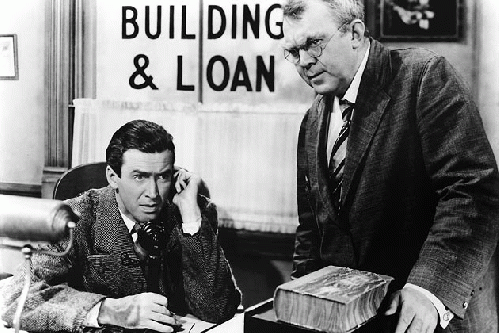The Dodd-Frank regulations are so lethal to community banks that some say the intent was to force them to sell out to the megabanks. Community banks are rapidly disappearing -- except in North Dakota, where they are thriving.
At over 2,300 pages, the Dodd Frank Act is the longest and most complicated bill ever passed by the US legislature. It was supposed to end "too big to fail" and "bailouts," and to "promote financial stability." But Dodd-Frank's "orderly liquidation authority" has replaced bailouts with bail-ins, meaning that in the event of insolvency, big banks are to recapitalize themselves with the savings of their creditors and depositors. The banks deemed too big are more than 30% bigger than before the Act was passed in 2010, and 80% bigger than before the banking crisis of 2008. The six largest US financial institutions now have assets of some $10 trillion, amounting to almost 60% of GDP; and they control nearly 50% of all bank deposits.
Meanwhile, their smaller competitors are struggling to survive. Community banks and credit unions are disappearing at the rate of one a day. Access to local banking services is disappearing along with them. Small and medium-size businesses -- the ones that hire two-thirds of new employees -- are having trouble getting loans; students are struggling with sky-high interest rates; homeowners have been replaced by hedge funds acting as absentee landlords; and bank fees are up, increasing the rolls of the unbanked and underbanked, and driving them into the predatory arms of payday lenders.
Even some well-heeled clients are being rejected. In an October 19, 2015 article titled "Big Banks to America's Firms: We Don't Want Your Cash," the Wall Street Journal reported that some Wall Street banks are now telling big depositors to take their money elsewhere or be charged a deposit fee.
Municipal governments are also being rejected as customers. Bank of America just announced that it no longer wants the business of some smaller cities, which have been given 90 days to find somewhere else to put their money. Hundreds of local BofA branches are also disappearing.
Hardest hit, however, are the community banks. Today there are 1,524 fewer banks with assets under $1 billion than there were in June 2010, before the Dodd-Frank regulations were signed into law.
Collateral Damage or Intended Result?
The rapid demise of community banking is blamed largely on Dodd-Frank's massively complex rules and onerous capitalization requirements. Just doing the paperwork requires an army of compliance officers, and increased capital and loan requirements are eliminating the smaller banks' profit margins. They have little recourse but to sell to the larger banks, which have large staffs capable of dealing with the regulations, and which skirt the capital requirements by parking assets in off-balance-sheet vehicles. (See "How Wall Street Captured Washington's Effort to Rein in Banks" in Reuters in April 2015.)
According to Rep. Jeb Hensarling (R-Texas), chairman of the House Financial Services Committee, the disappearance of community banks was not an unintended consequence of Dodd-Frank. He said in a speech in July:
The Dodd-Frank architecture, first of all, has made us less financially stable. Since the passage of Dodd-Frank, the big banks are bigger and the small banks are fewer. But because Washington can control a handful of big established firms much easier than many small and zealous competitors, this is likely an intended consequence of the Act. Dodd-Frank concentrates greater assets in fewer institutions. It codifies into law 'Too Big to Fail' . . . . [Emphasis added.]
In an article titled "The FDIC's New Capital Rules and Their Expected Impact on Community Banks," Richard Morris and Monica Reyes Grajales concur. They note that "a full discussion of the rules would resemble an advanced course in calculus," and that the regulators have ignored protests that the rules would have a devastating impact on community banks. Why? The authors suggest that the rules reflect "the new vision of bank regulation -- that there should be bigger and fewer banks in the industry."
The Failure of Regulation
Obviously, making the big banks bigger also serves the interests of the megabanks, whose lobbyists are well known to have their fingerprints all over the legislation. How they have been able to manipulate the rules was seen last December, when legislation drafted by Citigroup and slipped into the Omnibus Spending Bill loosened the Dodd-Frank regulations on derivatives. As noted in a Mother Jones article before the legislation was passed:
The Citi-drafted legislation will benefit five of the largest banks in the country--Citigroup, JPMorgan Chase, Goldman Sachs, Bank of America, and Wells Fargo. These financial institutions control more than 90 percent of the $700 trillion derivatives market. If this measure becomes law, these banks will be able to use FDIC-insured money to bet on nearly anything they want. And if there's another economic downturn, they can count on a taxpayer bailout of their derivatives trading business.
(Note: You can view every article as one long page if you sign up as an Advocate Member, or higher).






